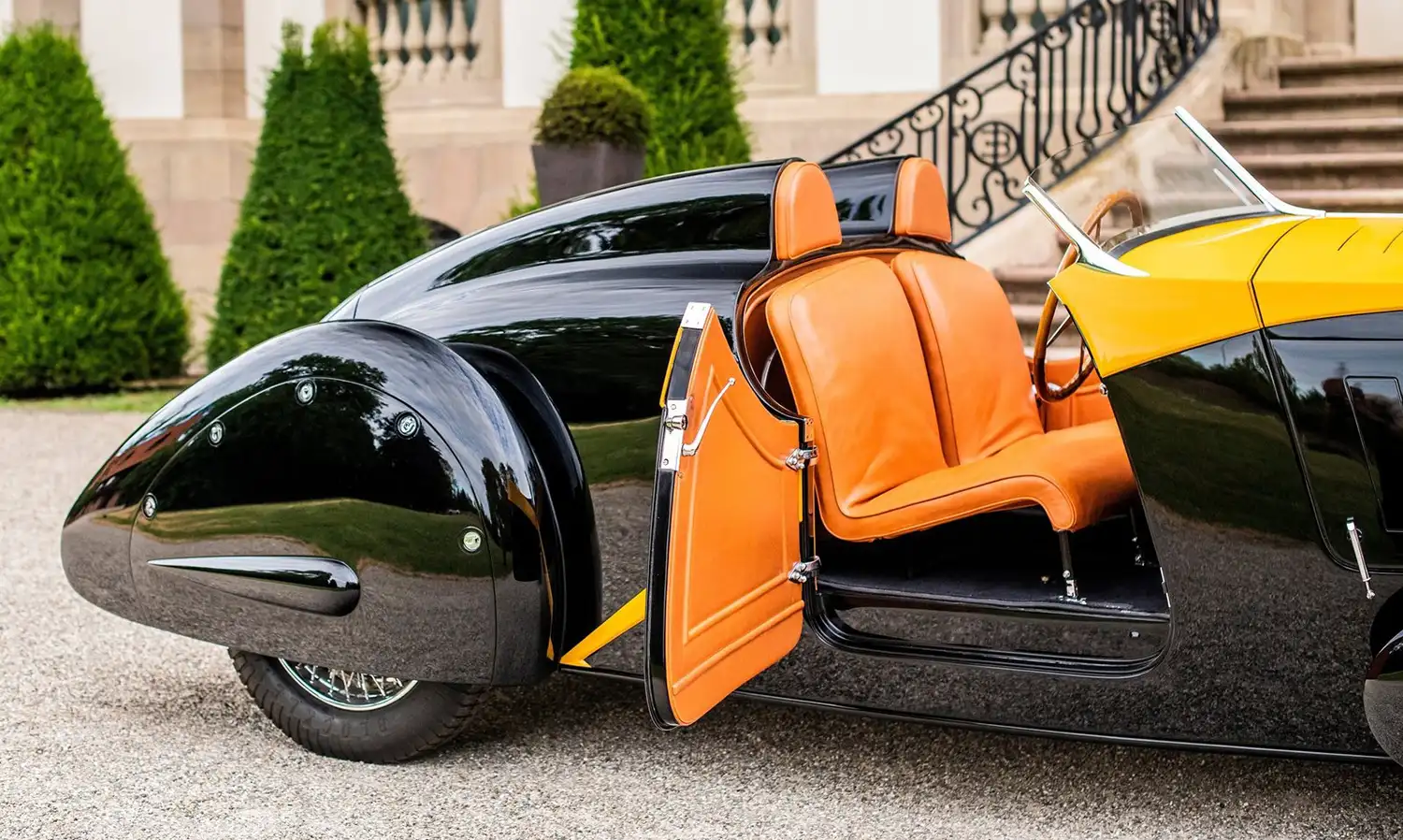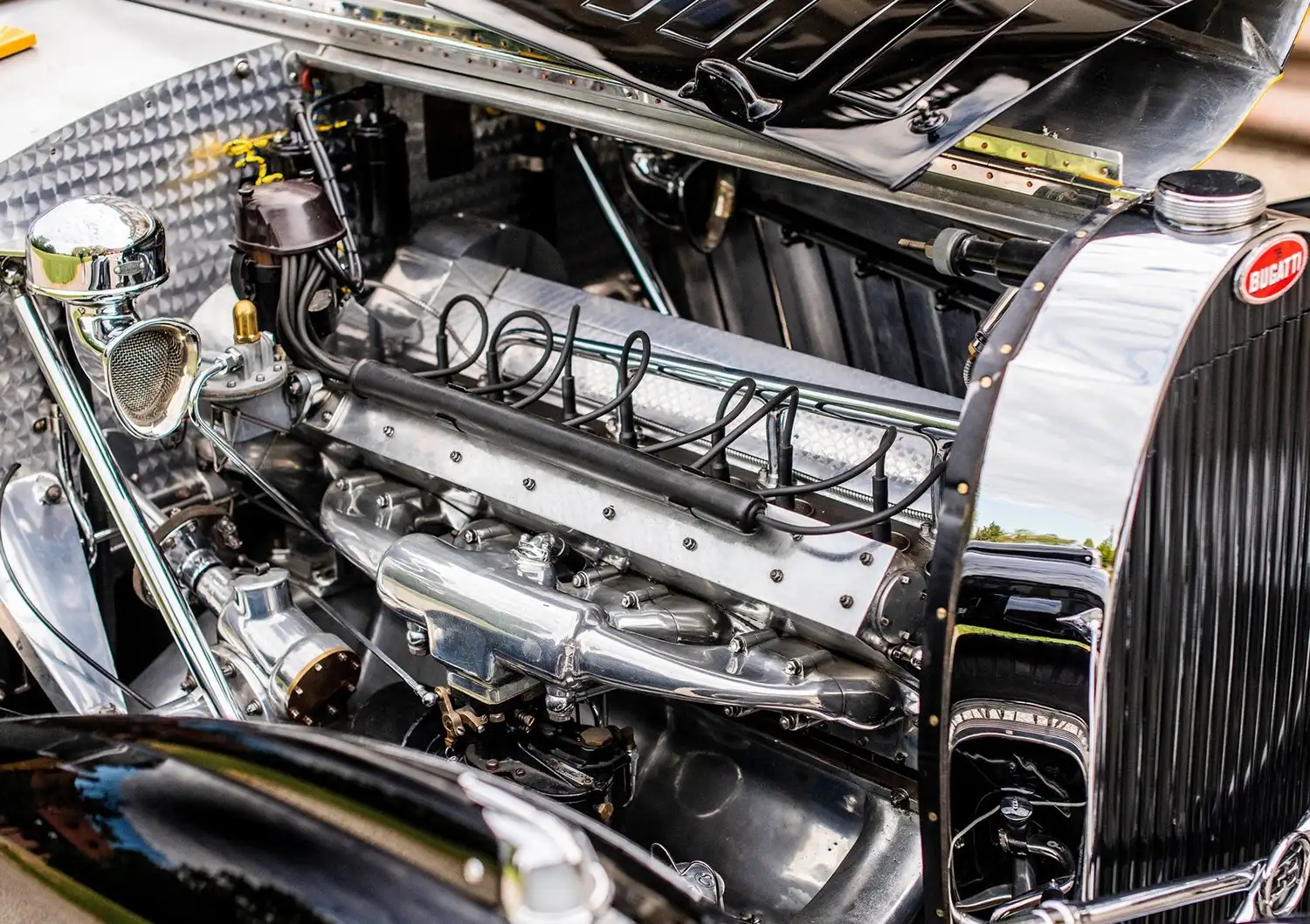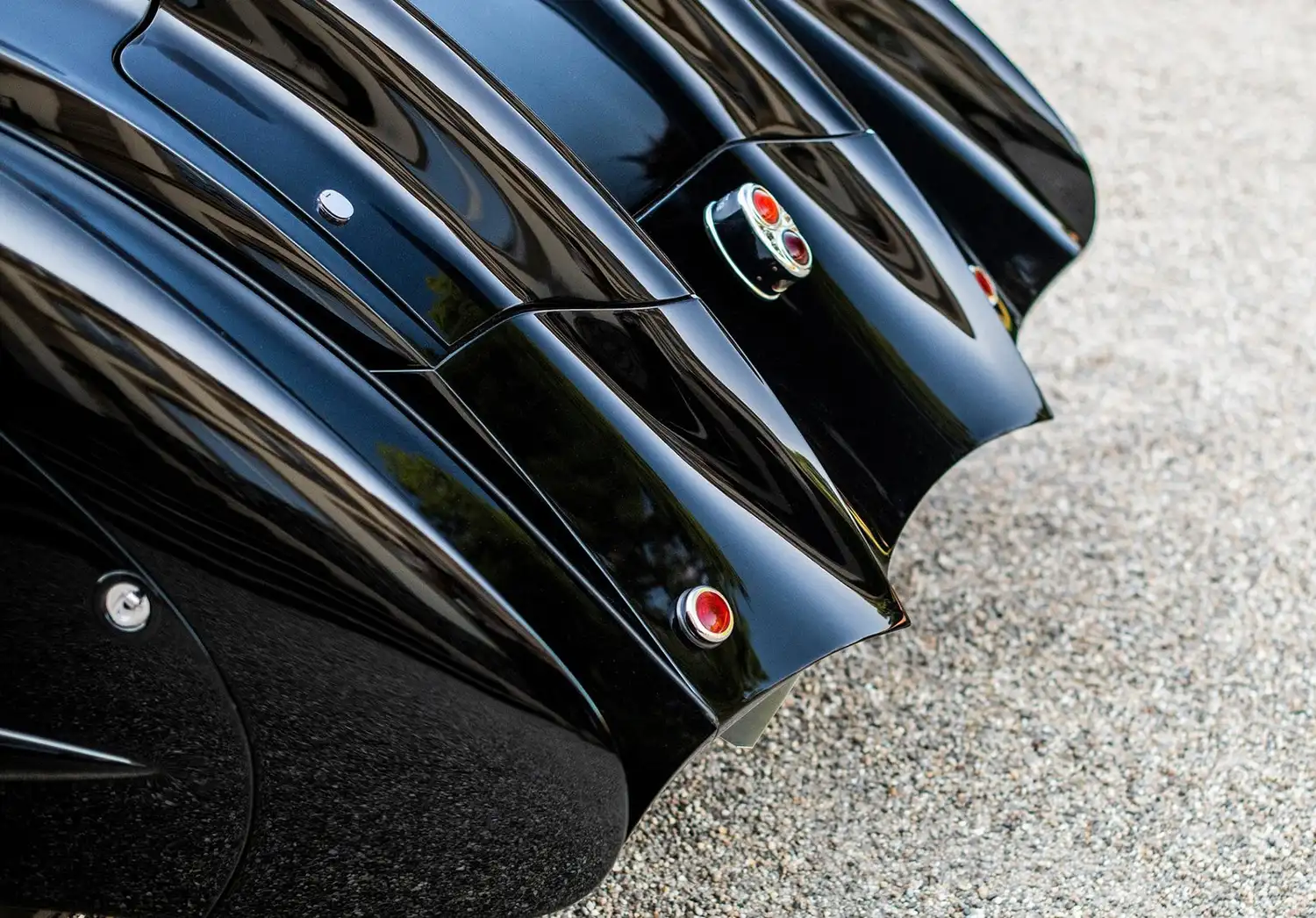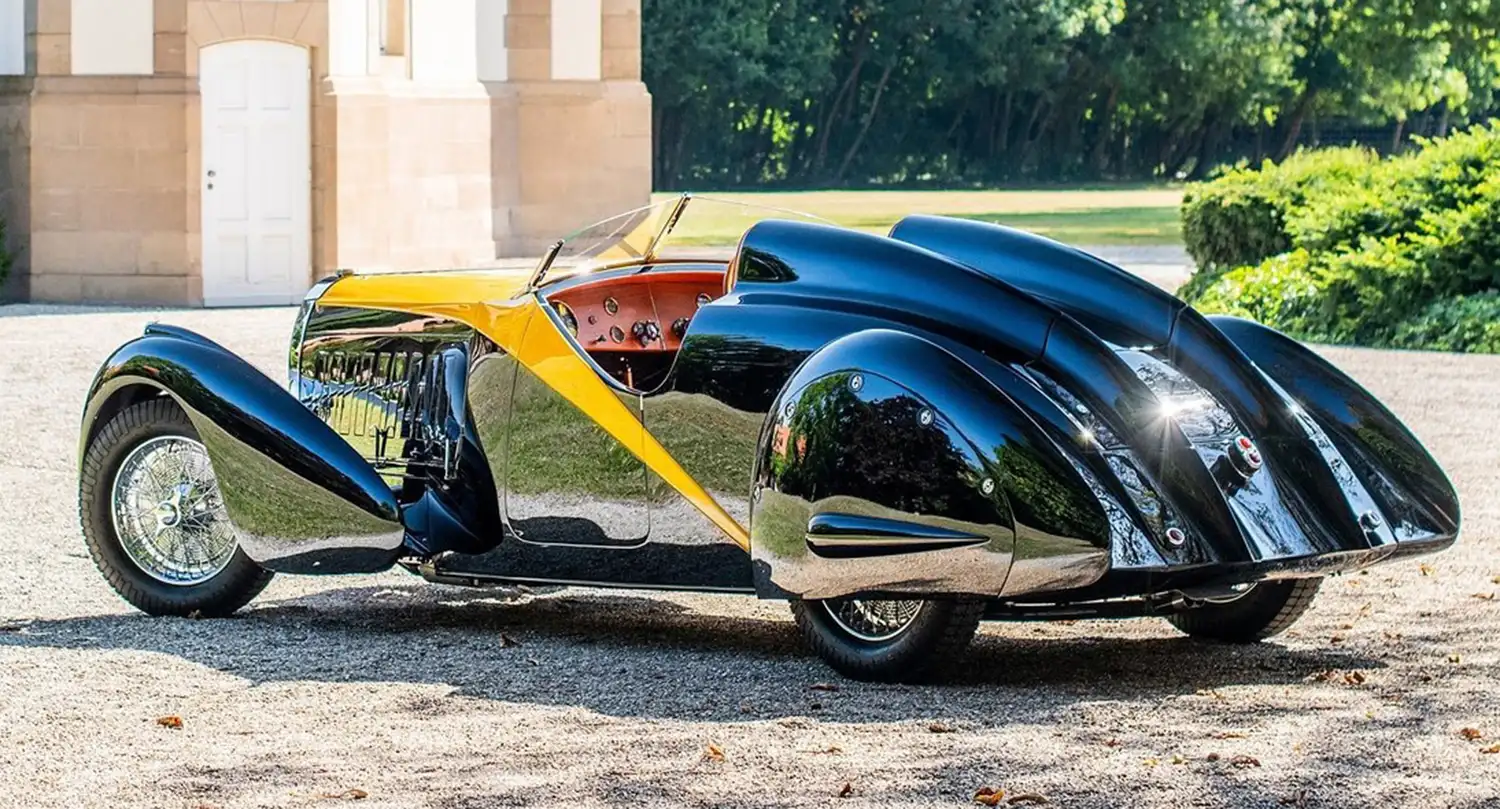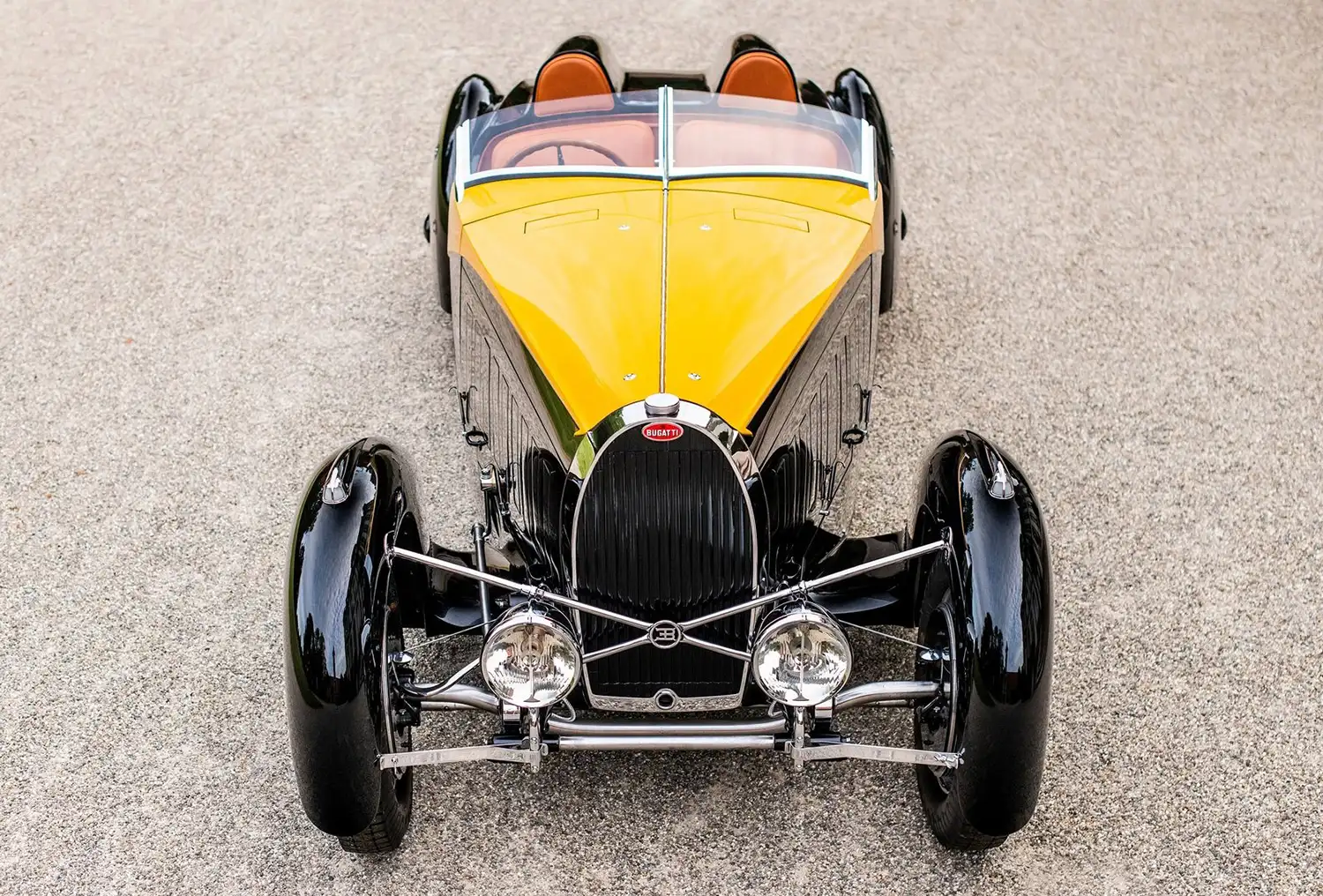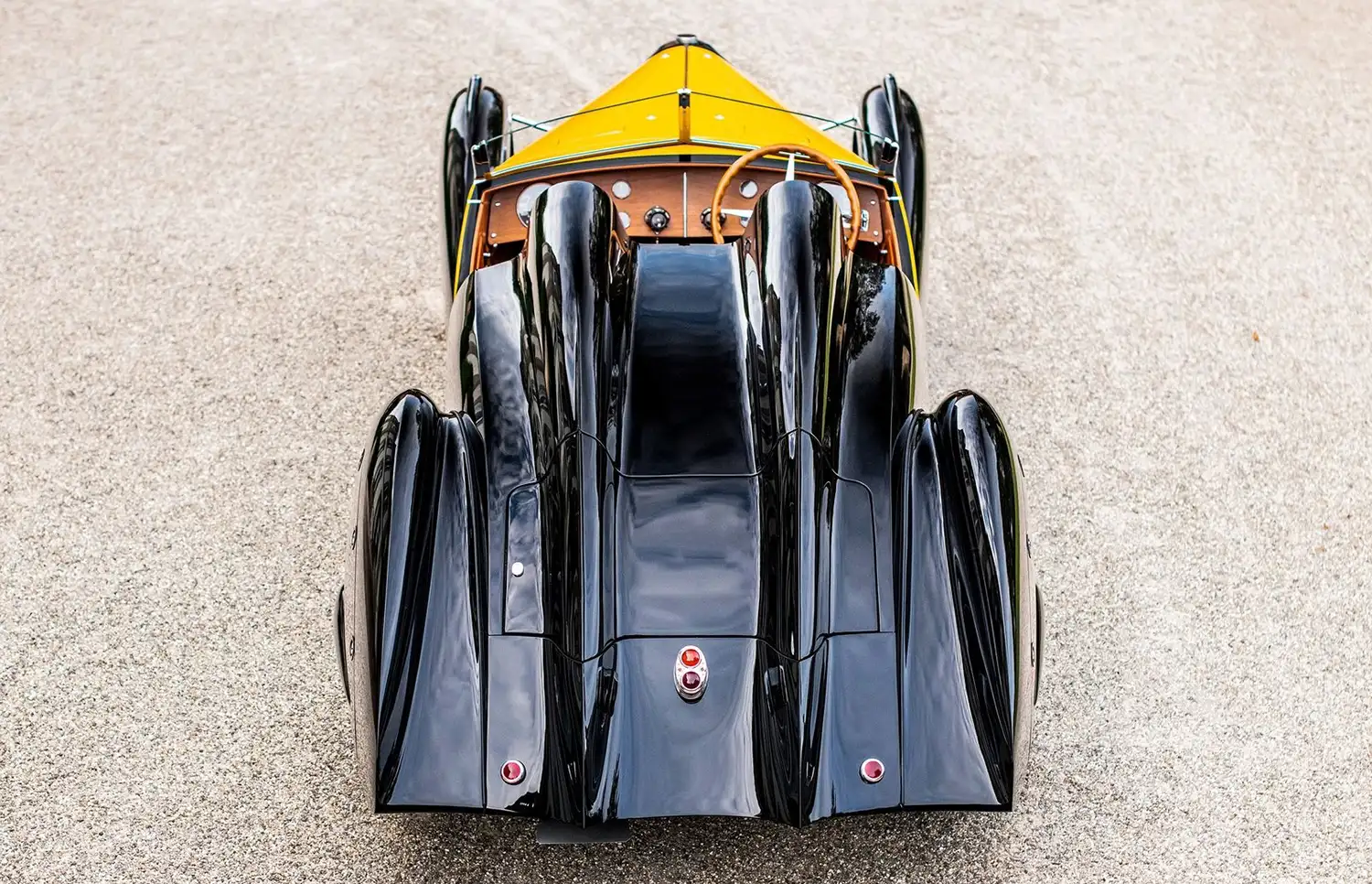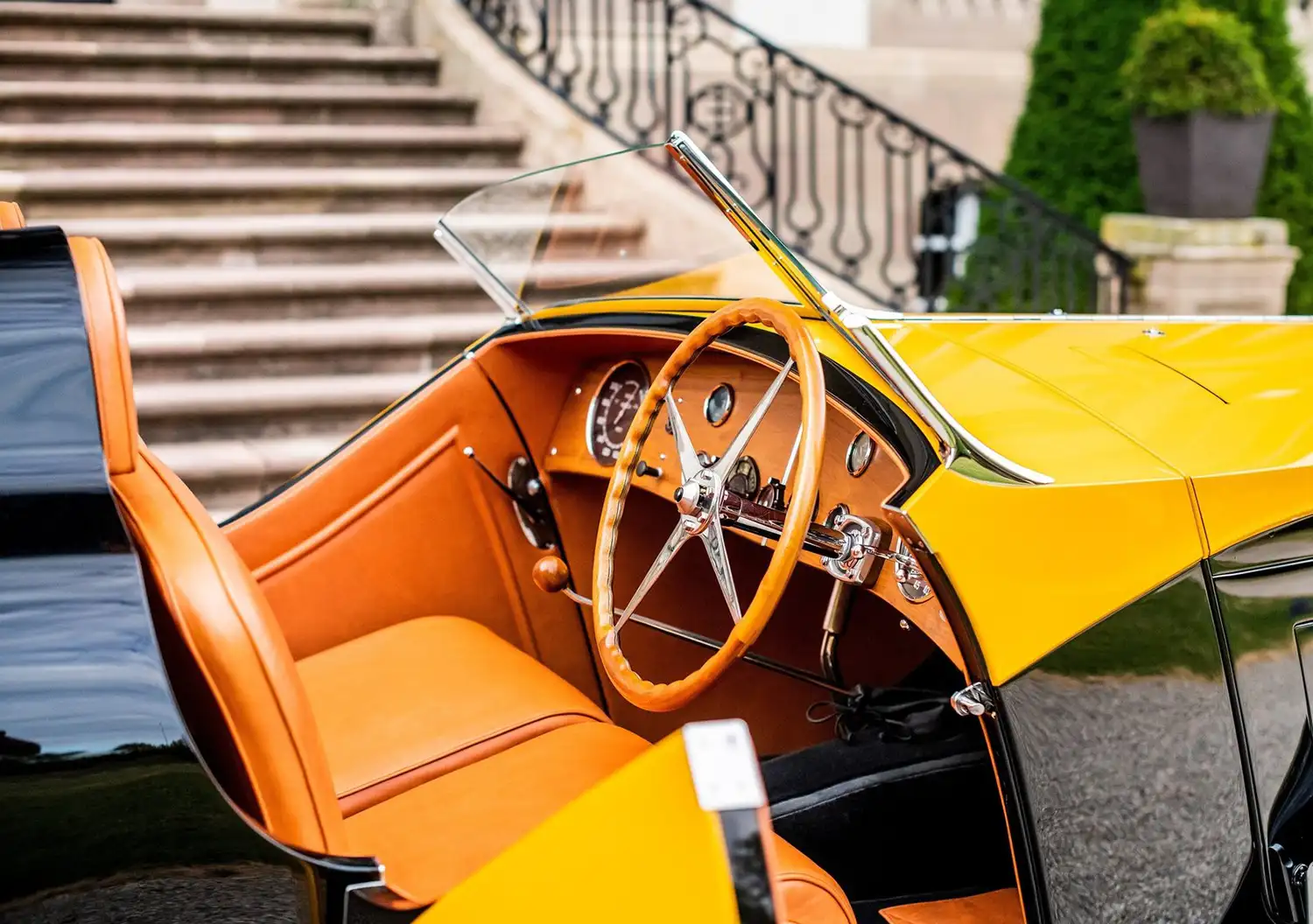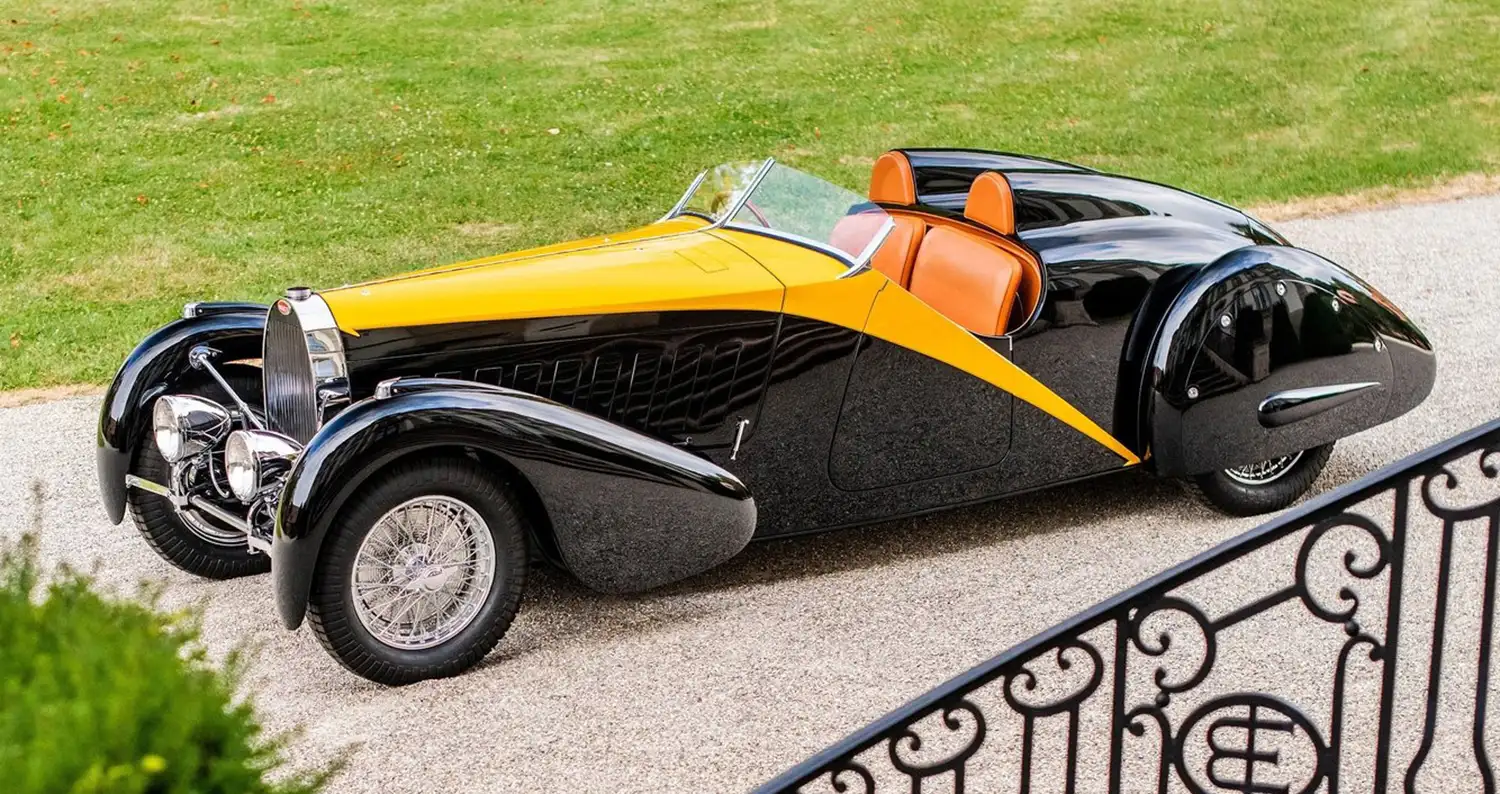
The Bugatti Type 57 Grand Raid was a special variant designed for endurance racing and long-distance touring. Here’s a brief overview of its significance:
- 1934: Introduction of the Bugatti Type 57 Grand Raid as a variant of the Type 57 model lineup.
- Purpose: The Grand Raid was specifically built for long-distance touring and endurance racing events, showcasing Bugatti’s engineering prowess and performance capabilities.
- Features: The Type 57 Grand Raid featured enhancements for endurance racing, including a robust chassis, improved suspension, and aerodynamic modifications to improve stability at high speeds.
- Performance: Equipped with Bugatti’s inline-eight engine, the Grand Raid variant offered impressive power and acceleration, making it suitable for competitive racing and touring alike.
- Racing Success: The Type 57 Grand Raid participated in prestigious endurance racing events such as the 24 Hours of Le Mans, where Bugatti achieved notable success in the 1930s.
- Legacy: The Bugatti Type 57 Grand Raid remains a revered model among collectors and enthusiasts, representing a golden era of endurance racing and automotive innovation.
Bugatti’s legacy is synonymous with extraordinary design and unparalleled engineering prowess, and within its illustrious history lies a gem that shines brighter than most: the Bugatti Type 57 Roadster Grand Raid Usine. As rare as it is captivating, this singular car holds a mystique that captivates enthusiasts and historians alike.
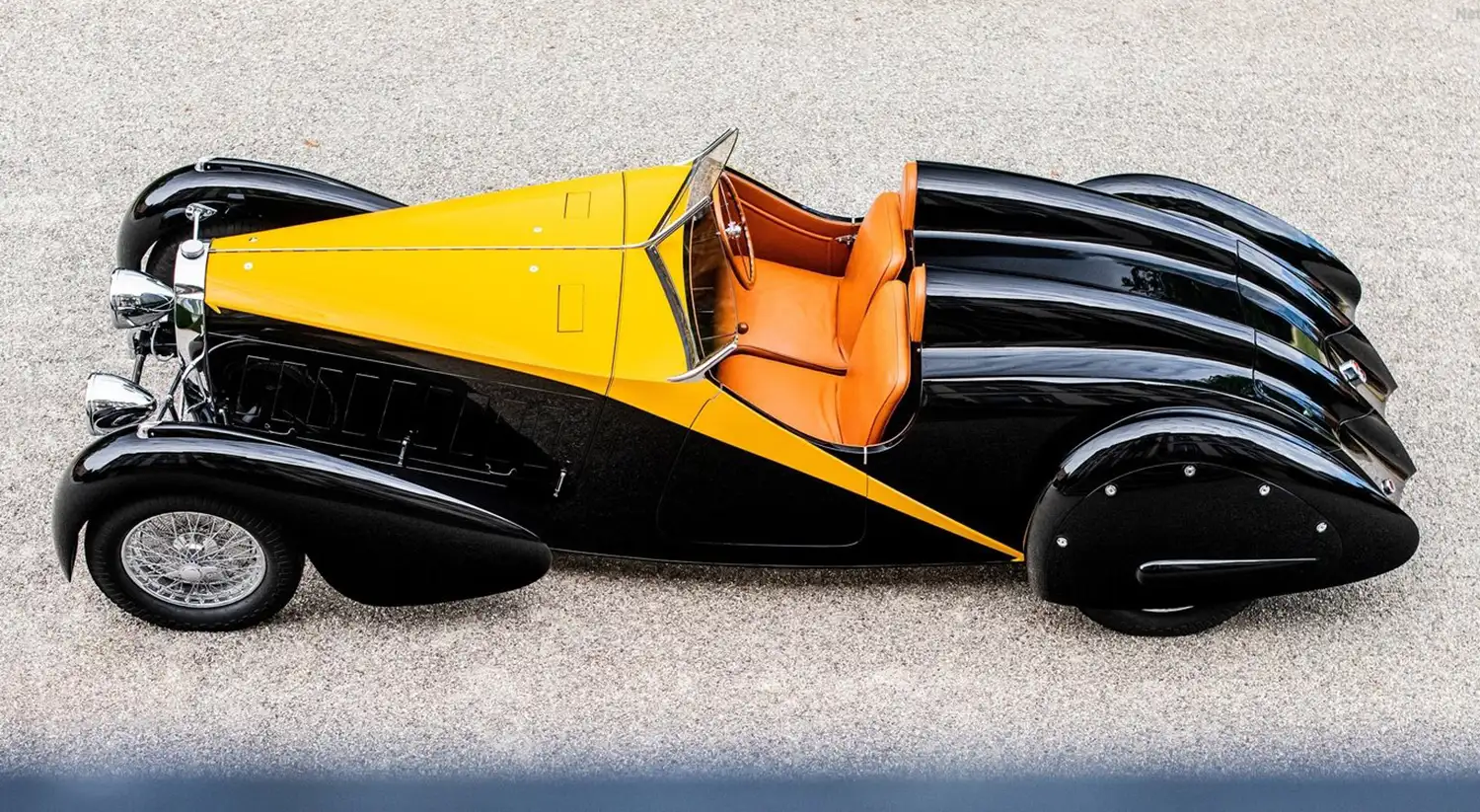
Unveiled at the Salon de l’Automobile in Paris in October 1934, the Bugatti Type 57 Roadster Grand Raid emerged as a beacon of innovation and performance. Among the various body types of the iconic Type 57, the ‘Grand Raid’ designation signified its purpose-built design for endurance racing, embodying the spirit of adventure and competition.
Only ten ‘Grand Raid’ chassis were ever constructed, with the Bugatti Type 57 Roadster Grand Raid Usine being the most enigmatic among them. Adorned with a unique aluminum body, this singular example, chassis number 57222, donned the distinctive black and yellow color scheme – a nod to the preferences of Bugatti’s visionary founder, Ettore Bugatti.
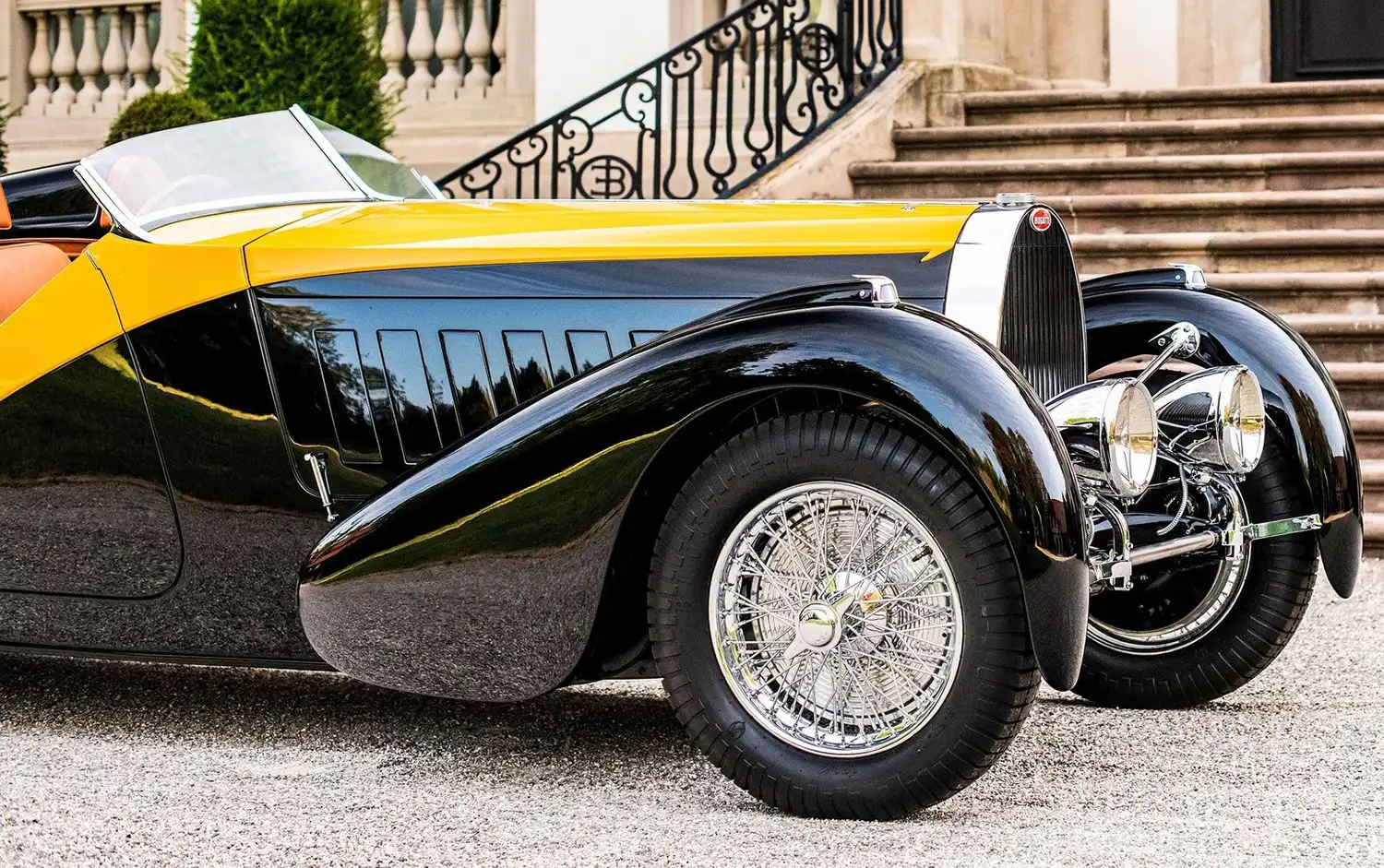
“The Bugatti Type 57 Roadster Grand Raid Usine epitomizes Bugatti’s legacy of excellence,” remarks Christophe Piochon, President of Bugatti Automobiles. “Crafted for performance and imbued with luxury, it remains a timeless symbol of automotive ingenuity, inspiring modern Bugatti creations.”
Shrouded in mystery, the ‘Usine’ moniker attached to this masterpiece adds to its allure. Speculated to be the brainchild of Jean Bugatti, son of the marque’s founder, the car showcases a distinct design language tailored for racing prowess. Streamlined fenders, a V-shaped windscreen, and aerodynamic headrest supports underscore its racing pedigree, while meticulous adjustments to the steering column and pedal layout enhance driver performance.

Following its debut, the Bugatti Type 57 Roadster Grand Raid Usine wasted no time in proving its mettle on the track. Piloted by legendary racer Pierre Veyron in the Paris-Nice rally, and later driven to victory by Grand Prix driver Robert Benoist in the Chavigny hill climb event, it showcased its unmatched capabilities in the hands of motorsport icons.
Over the years, the car underwent modifications under new ownership, including alterations to its fender lights. However, a subsequent restoration meticulously reverted it to its original configuration, preserving its historic significance. Since 2001, the Bugatti Type 57 Roadster Grand Raid Usine has found a fitting home in the Louwman Museum in The Hague, Netherlands.
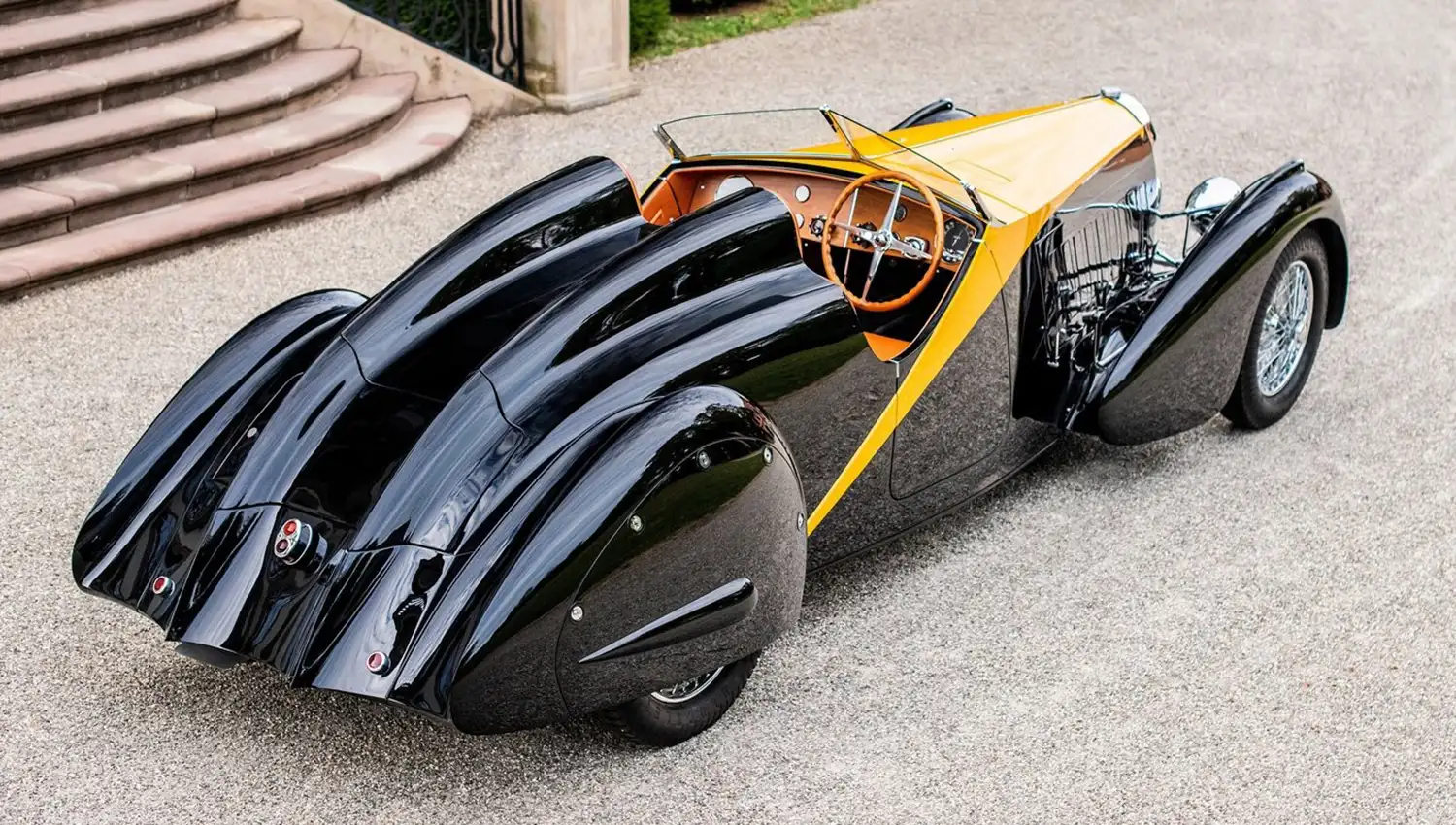
As part of the museum’s prestigious collection, the Bugatti stands as a testament to over 130 years of automotive innovation and design. Nestled within the museum’s architectural marvel, this rare artifact continues to mesmerize visitors, embodying Bugatti’s timeless legacy for generations to come.
Specs
- Engine: Inline-eight engine
- Displacement: 3.3 liters
- Power Output: Approximately 135 horsepower
- Transmission: 4-speed manual gearbox
- Top Speed: Around 95 mph (153 km/h)
- Acceleration (0-60 mph): Estimated around 12 seconds
- Body: Aluminum coachbuilt body
This Article use tools from Chatgpt
